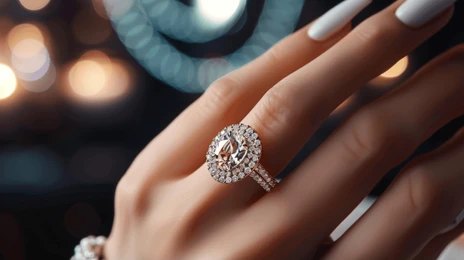The jewelry industry is undergoing a significant transformation, with artificial diamonds jewelry emerging as a leading choice for consumers who value both luxury and responsibility. As technology advances and ethical considerations become more prominent, lab-grown diamonds are reshaping the landscape of fine jewelry. This blog explores why artificial diamonds are becoming the future of jewelry and what makes them a compelling choice for modern buyers.
Understanding Artificial Diamonds
Artificial diamonds are created using advanced technologies that mimic the natural processes of diamond formation. The two primary methods are High Pressure High Temperature (HPHT) and Chemical Vapor Deposition (CVD). HPHT replicates the intense pressure and temperature conditions found deep within the Earth, while CVD involves growing diamonds from a carbon-rich gas. Both methods produce diamonds that are chemically and physically identical to natural diamonds, ensuring the same level of brilliance, hardness, and durability.
Ethical and Environmental Advantages
One of the standout features of artificial diamonds jewelry is its ethical and environmental benefits. Traditional diamond mining is associated with numerous issues, including environmental degradation, habitat destruction, and human rights abuses. In contrast, artificial diamonds are produced in controlled environments, significantly reducing their environmental impact and eliminating many of the ethical concerns associated with mining. By choosing artificial diamonds, consumers can enjoy exquisite jewelry while supporting sustainable and responsible practices.
Economic Advantages
Artificial diamonds offer a cost-effective alternative to natural diamonds without sacrificing quality. The production of lab-grown diamonds is generally less expensive than traditional mining, resulting in lower prices for consumers. This affordability allows buyers to invest in larger or higher-quality diamonds within their budget. Despite the lower cost, artificial diamonds maintain the same exceptional standards of beauty and durability as their natural counterparts, making them an attractive option for those seeking both value and luxury.
Design Flexibility and Customization
The versatility of artificial diamonds opens up a world of design possibilities. Lab-grown diamonds can be crafted into a wide range of styles and settings, allowing buyers to create personalized and unique jewelry pieces. Whether you're interested in a timeless engagement ring, a statement necklace, or a stylish bracelet, artificial diamonds can be tailored to match your preferences. Many jewelers offer customization services, enabling you to design a piece that perfectly reflects your personal style and taste.
Technological Advancements and Market Growth
The technology behind artificial diamonds continues to advance, improving the quality and variety of lab-grown diamonds. Innovations in HPHT and CVD methods are making it possible to produce diamonds with even greater precision and diversity. As the market for artificial diamonds grows, more retailers and designers are incorporating these stones into their collections, making it easier for consumers to find the perfect piece. The ongoing development in technology and the increasing demand for sustainable products are driving the future of artificial diamonds in the jewelry industry.
Conclusion
Artificial diamonds jewelry is paving the way for the future of fine jewelry. With their stunning beauty, ethical production, and affordability, lab-grown diamonds offer a modern alternative to traditional mined stones. As technology evolves and consumer preferences shift, artificial diamonds are set to become a central feature in the world of luxury jewelry. Embrace the future of jewelry with artificial diamonds and discover a new standard of elegance and responsibility.





Comments